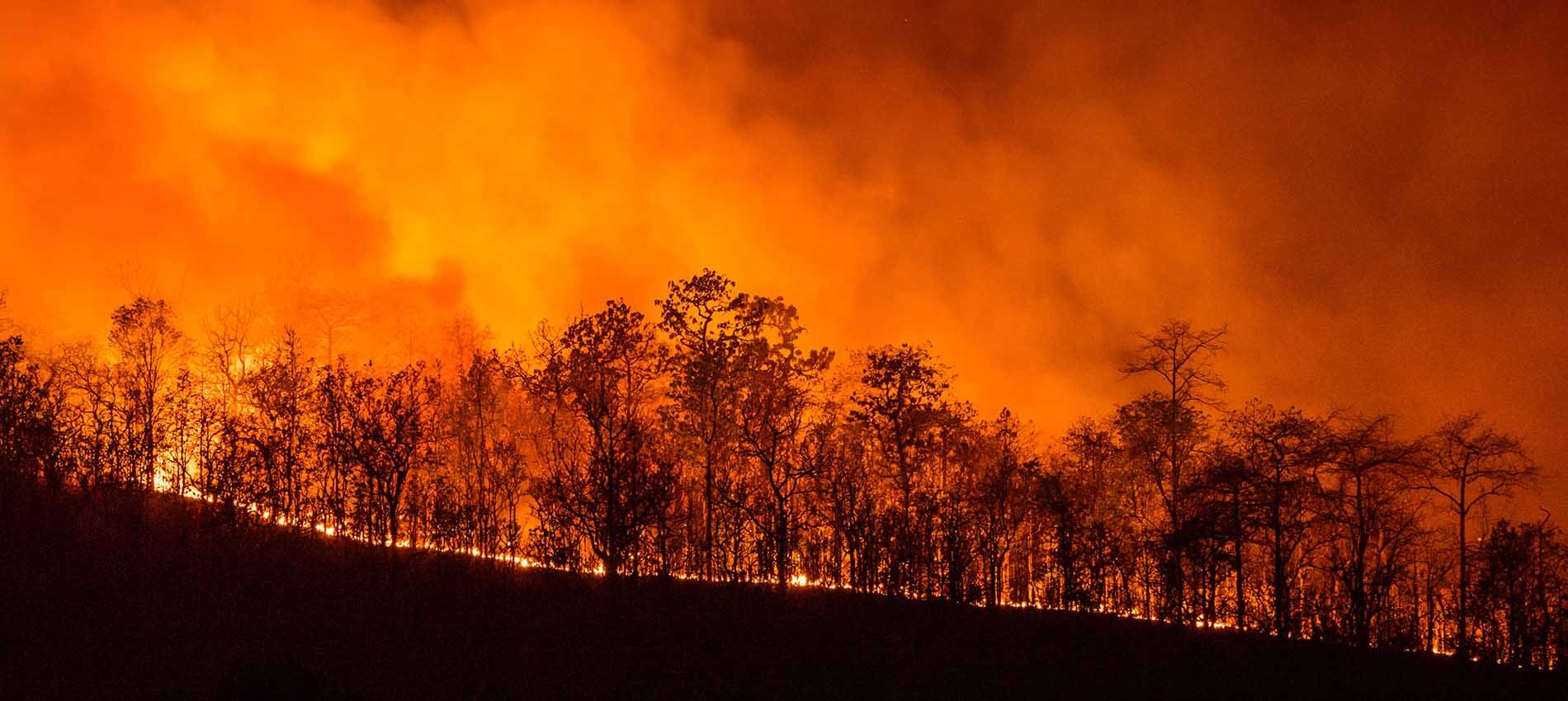Wildfires have always been a natural part of forest and grassland ecosystems, but in recent years they have been getting bigger, more frequent, and more destructive. If you’re a landowner in a fire-prone area, it’s important to be aware of what you can do to reduce the risk of catastrophic loss and promote natural resource recovery in the event a fire does strike.
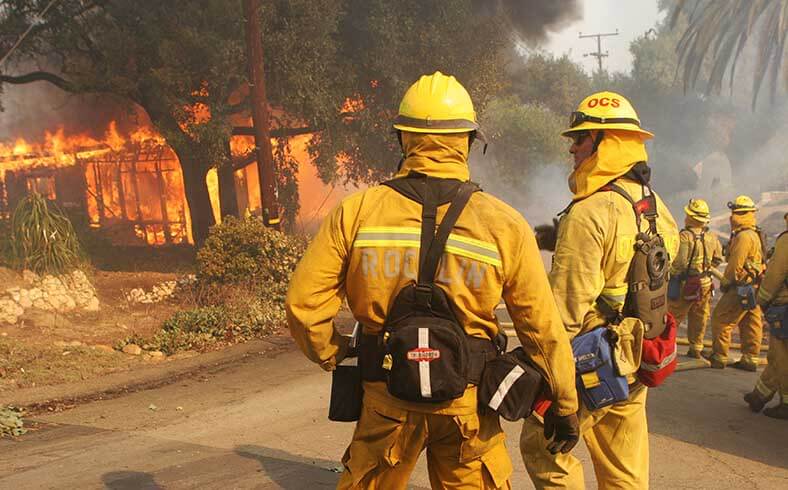
Minimizing risks
You may not be able to prevent wildfire from affecting your land, but you can minimize the risk of damage to your home by creating a defensive zone that’s less likely to go up in flames.
Reduce the amount of fuel within the defensible area by choosing plants with a high moisture content, such as grasses, flowers, and other herbaceous plants. Avoid flammable plants, such as juniper and sagebrush, and keep vegetation low to avoid creating “fire ladders”—plant arrangements where fire can easily jump from the ground to higher levels. Thin out dense shrubs and stands of trees to reduce the amount of concentrated fuel. Deciduous trees tend to contain more moisture and fewer flammable chemicals than evergreens.
Water plants well to maximize their resistance to fire, and keep your defensive zone clean by removing dry branches and dead vegetation. Consider adding hardscaping, such as patios, paved or gravel walkways and driveways, rock mulch, and boulders.
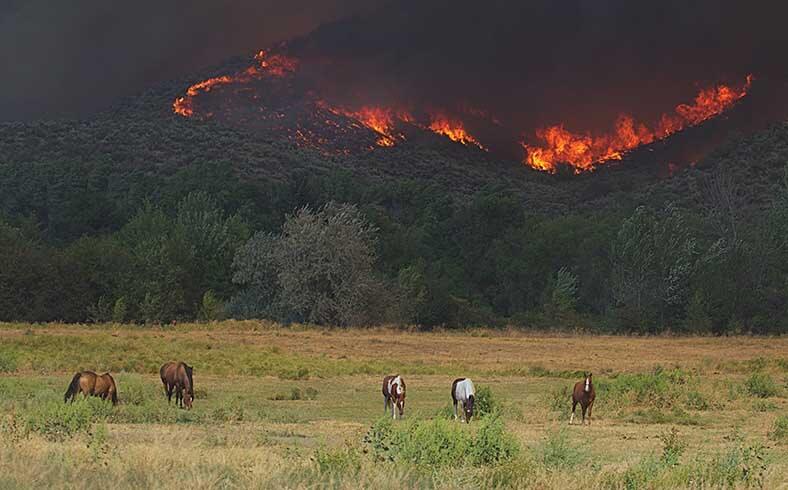
Wildfire impacts
How quickly your land recovers after a wildfire will depend on a variety of factors, including climate, vegetation, soil type, available water, and the intensity of the fire. High-intensity fires destroy almost everything in their path, from ground level to the forest canopy, whereas low-intensity fires typically burn along the forest floor, perhaps singeing or scorching lower branches or small trees, but leaving the canopy undamaged, along with some of the ground cover.
Low-intensity fires can benefit plant communities by recycling nutrients and thinning out dense trees and underbrush, reducing the amount of flammable material, and minimizing the risk of future high-intensity fires. In contrast, high-intensity fires kill all the vegetation, leading to severe damage, especially from erosion. Under normal circumstances, the soil surface is protected by both standing vegetation and a layer of decaying plant litter that minimizes evaporation, absorbs rainfall, and reduces runoff. By removing ground cover, high-intensity wildfires leave the soil unable to absorb water and susceptible to erosion by wind and rain, which, in turn, can cause flash flooding and contamination of waterways.
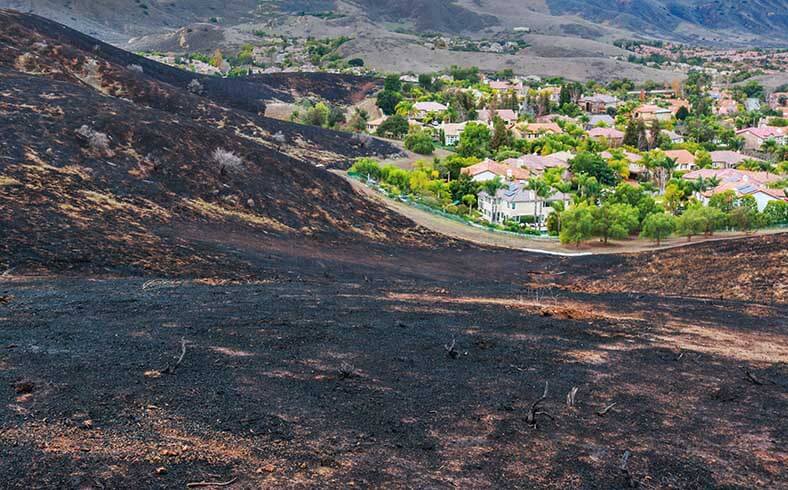
Recovering from wildfire
As soon as possible after the fire, assess your land for damage by evaluating tree mortality and soils, and making particular note of any conditions that have the potential to cause further damage, such as flooding, erosion, or fire reoccurrence. Mature stands of forest may take decades to return to pre-fire size, whereas grasslands can often be returned to productivity within a year.
There are several erosion-control measures that can be taken during the first few years after a fire in order to protect the productivity of the land. The most important thing is to protect the soil surface from the impact of rain and improve its ability to absorb water in order to prevent runoff. Effective treatments include covering soil with mulch and planting it with grass or seedlings that will grow quickly and hold the soil in place. Slopes are at the greatest risk of erosion, so prioritize seeding in these areas, using a cover of mulch to keep seeds in place until they can germinate.
Spreading tree limbs, branches, or logs on bare soil can reduce rain impact and soil runoff. Other barriers that can be used to protect soil from erosion include landscape fabrics, straw bales, and straw wattles (tubes of plastic netting packed with straw or other biodegradable materials).
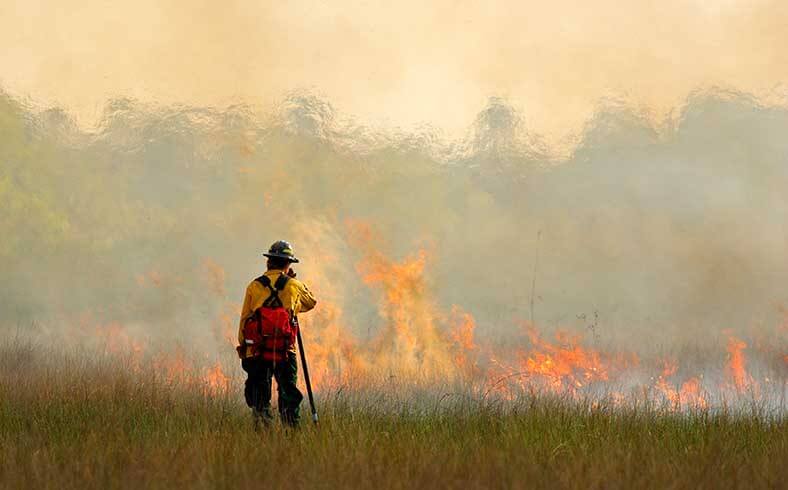
Forest recovery
After assessing fire damage to forest land, you will need to decide whether or not to harvest burned trees. The potential for tree recovery will depend on a variety of factors, including the degree of damage to the crown, foliage, buds, bark, and roots.
Salvage logging can help recover some financial value from burned trees and improve the health of the remaining forest. Fire-damaged trees are at an increased risk of infestation by insects such as bark beetles and can serve as a conduit for problems to spread to healthy trees. Standing dead trees are potential fuel for future wildfire outbreaks, but removing too many trees after a fire can increase the risk of erosion and water quality issues. Leaving some dead trees in place benefits forests by providing wildlife habitat and returning nutrients and organic matter to the soil as they decay.
It’s best to hire a professional forester to evaluate your forest health and provide advice regarding salvage harvesting. This should be done soon after a fire since fire-damaged trees lose commercial value quickly through decay and fungal infections brought by insect pests. By the third year after a fire, burned trees have usually lost most of their value.
Depending on the damage, forests may regenerate naturally or may require active management to promote healthy new growth. Tree planting may be necessary where fire intensity was high.
Grassland recovery
Unlike forests, grasslands tend to recover rapidly after a wildfire, in part because fires typically move over such plants very quickly, minimizing their exposure to high temperatures. Most grassland species are adapted to fire and will recover with minimal management, provided the land is healthy and not stressed by overgrazing.
Annual broadleaf weeds are the first to re-colonize after a fire, providing essential soil cover that helps prevent erosion. Grasses will typically return in the spring following the fire once moisture conditions improve. As the land recovers, monitor it regularly to make sure troublesome weeds do not take over. If the burned pasture was not a productive one, reseeding may be necessary.
To allow burned grassland to regain its productivity, allow it to rest from grazing for a full growing season following a fire (longer in cases of severe damage). Returning livestock to a pasture too soon will put the land at risk from further damage. Avoid using heavy equipment that will compact burned and exposed soil.
Tax considerations
If your property has been affected by fire, you may be eligible to deduct certain losses on your taxes, depending in part on whether your land is classified as personal property or an investment with profit intent. You may qualify for a casualty loss deduction or an investment tax credit for planting and reforestation costs.
However, the costs associated with collecting the data required to calculate the loss may exceed the tax benefits for which you qualify. It’s best to consult a specialized tax professional to help evaluate the situation and determine whether it is worth claiming the loss or expenses on your tax return.
